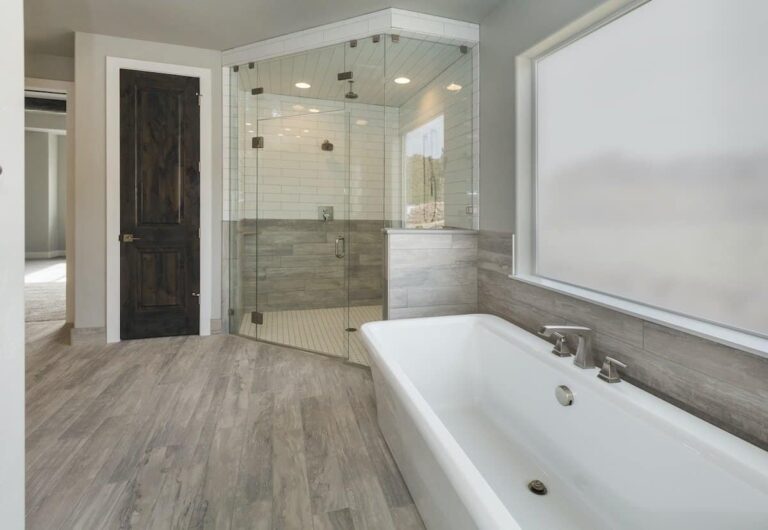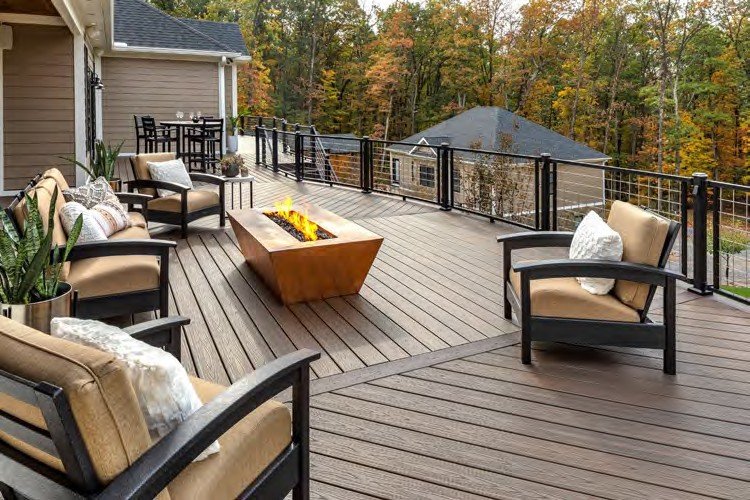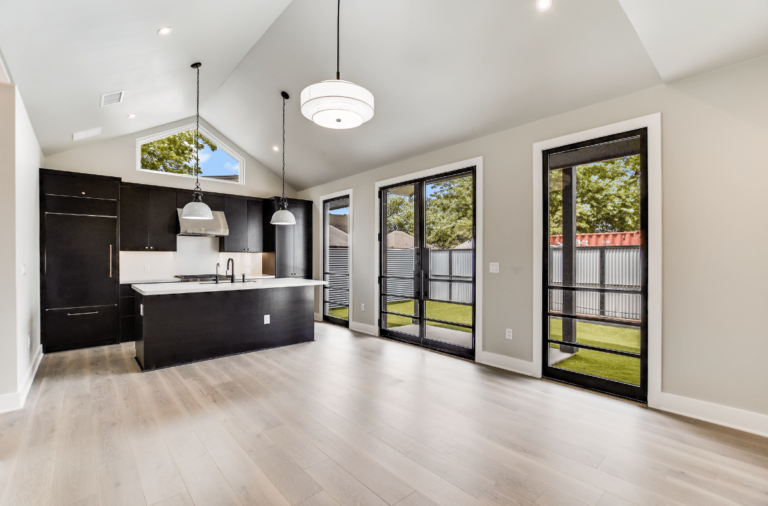Does an Attic Conversion Add Value
When you consider an attic conversion, you might wonder if it really adds value to your property. Generally, such a project can yield a return on investment between 50% to 80%, especially if you transform that unused space into functional areas like bedrooms or home offices. However, the potential increase in value isn't just a simple calculation; it depends on several factors, including your location and the quality of the work. So, what elements should you prioritize to guarantee the best return?
Understanding Return on Investment

Understanding the return on investment (ROI) for an attic conversion is essential if you're considering this home improvement. To grasp the potential financial impact, you'll need to perform some ROI calculations. The basic formula is straightforward: subtract your renovation costs from the market value of the converted space, then divide that by the renovation costs. Aim for a target ROI of 60-70%, with high-quality projects possibly yielding over 80%.
Keep in mind that ROI can vary considerably based on your location, the quality of finishes, and the scope of your project. Hot real estate markets tend to offer higher returns, while cooler areas might yield lower percentages. Notably, a full attic conversion offers an estimated 75% ROI according to NAR, which can significantly enhance your investment.
Consider how your investment strategies align with these insights. If you plan to rent or sell, a well-executed attic conversion can enhance your property's appeal and market value. You might add 50-60% in increased value, particularly with desirable features like income suites or game rooms.
Ultimately, while the upfront costs can be substantial, the long-term benefits and lifestyle improvements can justify the investment, making it a wise choice for many homeowners.
Factors Influencing Property Value

When considering the factors that influence property value, it's vital to recognize the interplay between economic conditions, location, and renovations. Economic indicators like GDP and unemployment rates greatly impact market demand. For instance, when interest rates are low, more buyers can afford homes, driving up property values. Conversely, a strong seller's market signals heightened demand, which can elevate prices further. Additionally, economic performance can significantly correlate with increased property demand, making it crucial to stay informed about the broader economic landscape.
Location is another cornerstone of property value. Proximity to schools, public transportation, and employment hubs can sway buyers' decisions, making your property more desirable. Additionally, neighborhood trends and overall appeal play significant roles in determining value, as buyers often seek vibrant, well-maintained communities.
Renovations, particularly attic conversions, directly affect market trends. Modernizing your space not only increases square footage but also enhances its utility, creating more living options that attract buyers. Quality design and smart use of converted spaces—like home offices or guest rooms—can also elevate your property's worth.
Ultimately, understanding these factors can help you make informed decisions that maximize your property's value in a competitive market.
Specific Value Increases by Location

Renovations, especially attic conversions, can greatly influence property value, but the extent of this impact varies by location.
In urban areas, the high demand for living space means that an attic conversion can increase your property value by 20-25%. Limited space makes these conversions particularly attractive to buyers, resulting in quicker sales and higher resale prices. You might see ROI rates of 60-80%+, thanks to the premium on square footage. Loft conversions are ideal for creating self-contained spaces, such as bedrooms with ensuites.
In suburban areas, while the increase in value is more moderate—around 10-15%—these conversions still appeal to families seeking extra space without expanding outward. They remain cost-effective and can offer a 50-70% ROI, especially with quality renovations.
Conversely, rural areas see a lower value increase of just 5-10%. Here, homeowners prioritize functionality over resale value, focusing on practical uses for the attic. While the financial gains may be less, the cost savings from avoiding external additions can still make conversions worthwhile.
Ultimately, understanding how urban demand and rural functionality impact your attic conversion will guide your investment decisions and help you maximize property value.
Popular Attic Conversion Uses

Attic conversions offer a wealth of possibilities that can transform underutilized space into functional and appealing areas of your home. One popular option is converting your attic into bedroom designs tailored for children or teenagers, providing them with a private retreat that fosters independence. The unique shapes and angles of attics create an inviting atmosphere that can be personalized easily.
Another appealing use is creating guest suites. By adding a bathroom, you can develop a self-contained space that's perfect for hosting friends or family. This addition not only enhances your home's functionality but also increases its overall value, as the national average ROI for attic conversion is approximately 61% ROI.
You might also consider transforming your attic into a cozy family room or a dedicated craft space. These conversions maximize natural light and provide an area where creativity and family bonding can thrive.
Additionally, if you work from home, an attic office offers a unique workspace distinct from the rest of the house, promoting focus and productivity.
Ultimately, the versatility of attic conversions allows you to choose an option that aligns with your lifestyle and needs, making it a worthwhile investment for your property.
Key Planning Considerations

Maximizing the potential of your attic conversion requires careful planning and consideration of various factors. To guarantee a successful project, focus on the following key planning considerations:
1. Building Regulations: Your conversion must comply with local building codes. This includes guaranteeing proper headroom, egress, ventilation, and insulation.
Failing to adhere to these regulations can lead to costly setbacks.
2. Structural Integrity: Before you start, assess the attic's structural soundness.
Consult with structural engineers to evaluate the framing and load-bearing capacity. This step is essential for supporting the additional weight of your new space.
3. Planning Permissions: Check whether you need planning permission for alterations like raising the roof or adding windows.
Contact your local permitting office to clarify what's required for compliance with zoning regulations.
Importance of Professional Execution

Recognizing the significance of professional execution in your attic conversion can dramatically influence the project's success. When it comes to design efficiency, engaging an experienced contractor is essential.
Attics present unique challenges, like limited access and sloped roofs, which require specialized knowledge to navigate effectively. A skilled contractor guarantees compliance with building codes, preventing potential legal issues and costly mistakes that could arise from amateur work. Moreover, evaluating contractor experience ensures they can handle the intricacies of your specific renovation.
Your contractor selection is important; choosing one with a proven track record in attic renovations can maximize your space's potential. Professionals not only bring expertise but also established relationships with suppliers, which can lead to cost savings on materials.
Their familiarity with local regulations streamlines the permit process, guaranteeing the project adheres to safety standards.
Moreover, professional execution mitigates risks associated with construction, providing peace of mind during your renovation. When you invest in a qualified contractor, you're not just enhancing your attic; you're securing the long-term value of your home.
Ultimately, prioritizing professional execution will lead to a smoother, more efficient project that enhances both functionality and value in your property.
Market Conditions and Value Impact

Understanding the interplay between market conditions and the value of your attic conversion is essential for making informed investment decisions.
Your loft conversion's value can be greatly affected by various factors, including location, economic conditions, and supply and demand dynamics.
- Location Matters: Properties in high-demand areas see a greater increase in value, especially those near public transport and amenities. Additionally, increased square footage from an attic conversion can significantly enhance a property's marketability.
- Market Trends: In a seller's market, where demand exceeds supply, you can expect a higher return on investment, potentially exceeding 80% for upscale conversions.
- Buyer Preferences: The specific use of the converted space—be it a home office or an extra bedroom—can greatly influence its appeal and market value.
Long-term Benefits of Attic Conversions

While considering home improvements, you might find that attic conversions offer a multitude of long-term benefits that extend beyond mere aesthetic appeal.
First and foremost, these conversions can notably boost your property's resale value by increasing the total square footage. This cost-effective upgrade typically delivers a high return on investment, often ranging from 50% to 80% or more. Additionally, transforming unused space into functional living areas can significantly enhance the overall appeal of your home.
Additionally, an attic conversion creates versatile spaces that can adapt to your family's changing needs, whether it's a home office, guest room, or entertainment area. This flexibility not only improves your lifestyle but also maximizes the efficient use of existing space, turning previously underutilized areas into functional living environments.
Moreover, incorporating sustainable upgrades during the conversion process, like enhanced insulation and energy-efficient windows, can lower your energy bills and contribute to a more comfortable home. These energy-efficient features are attractive to potential buyers, further enhancing your home's value.






